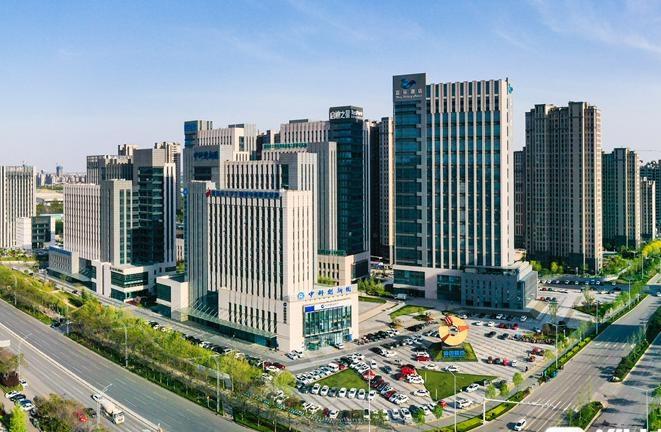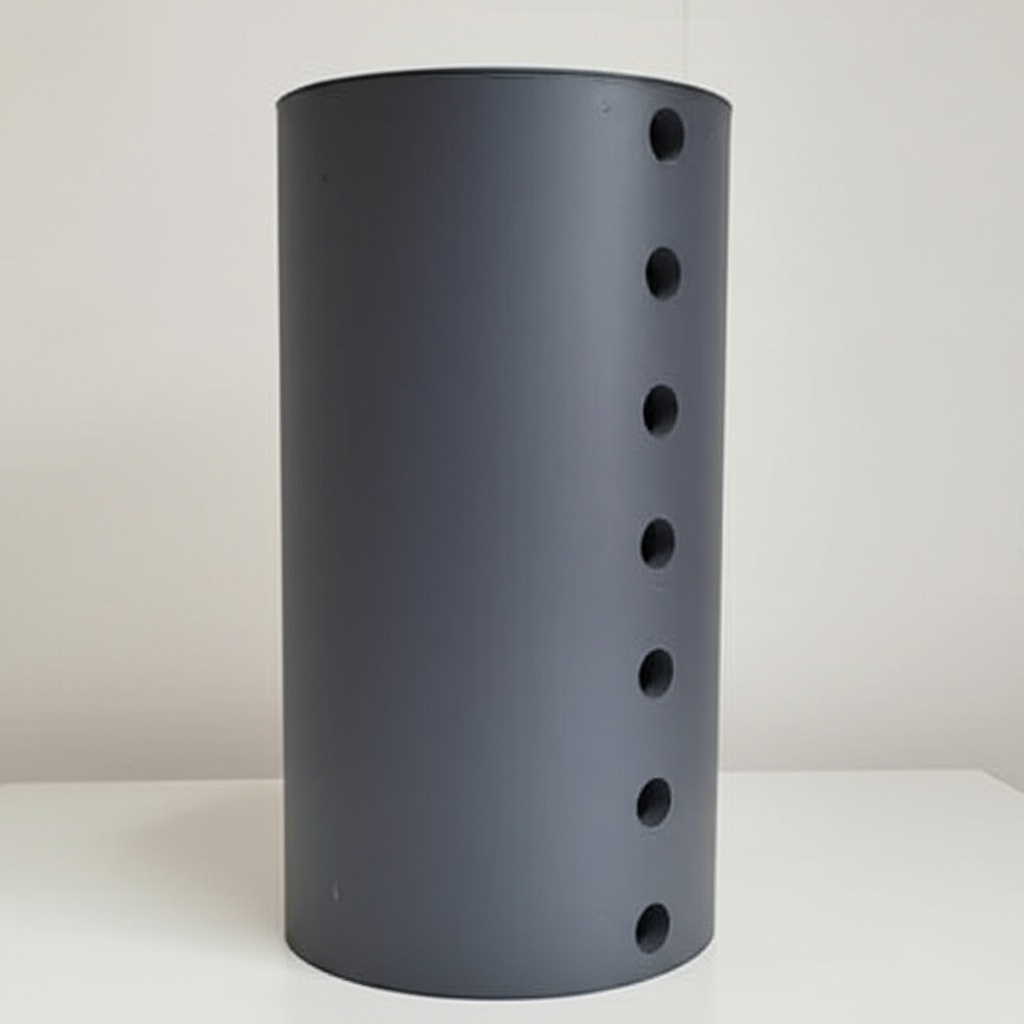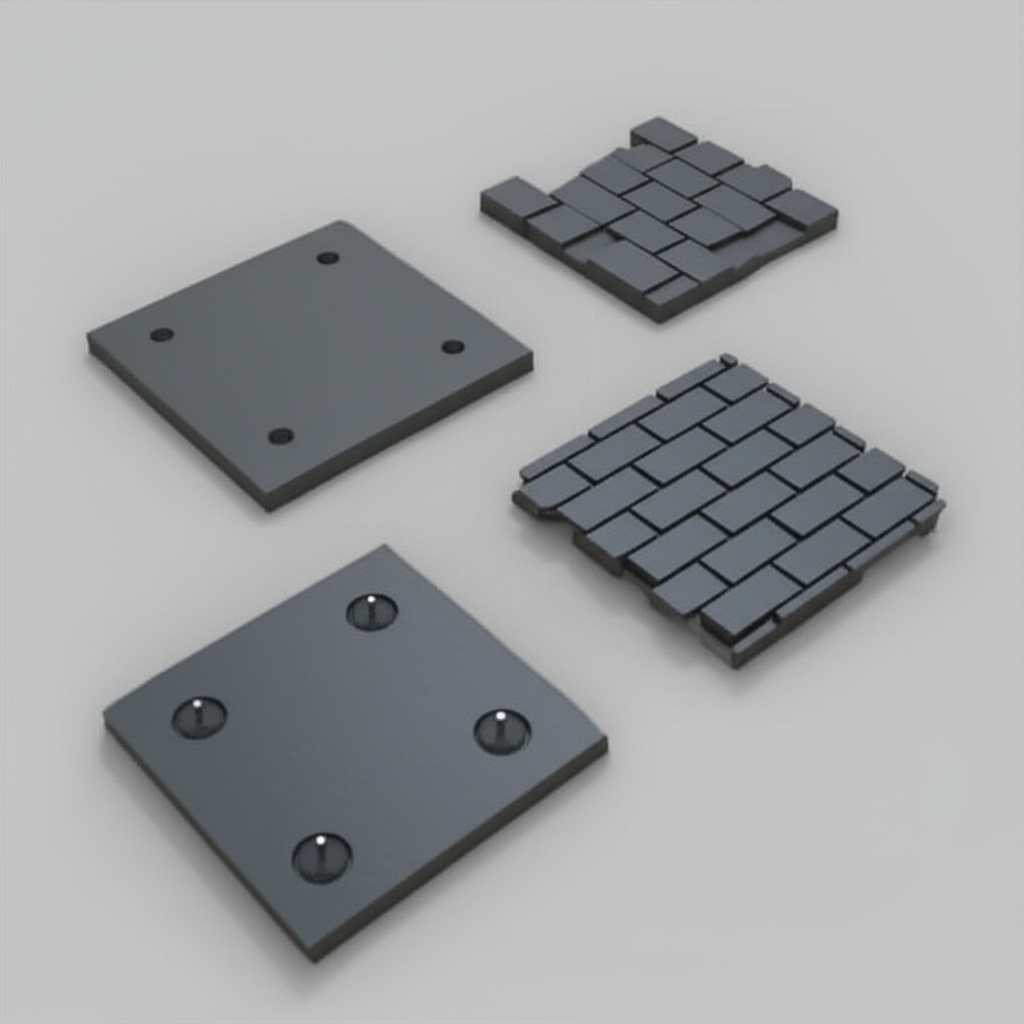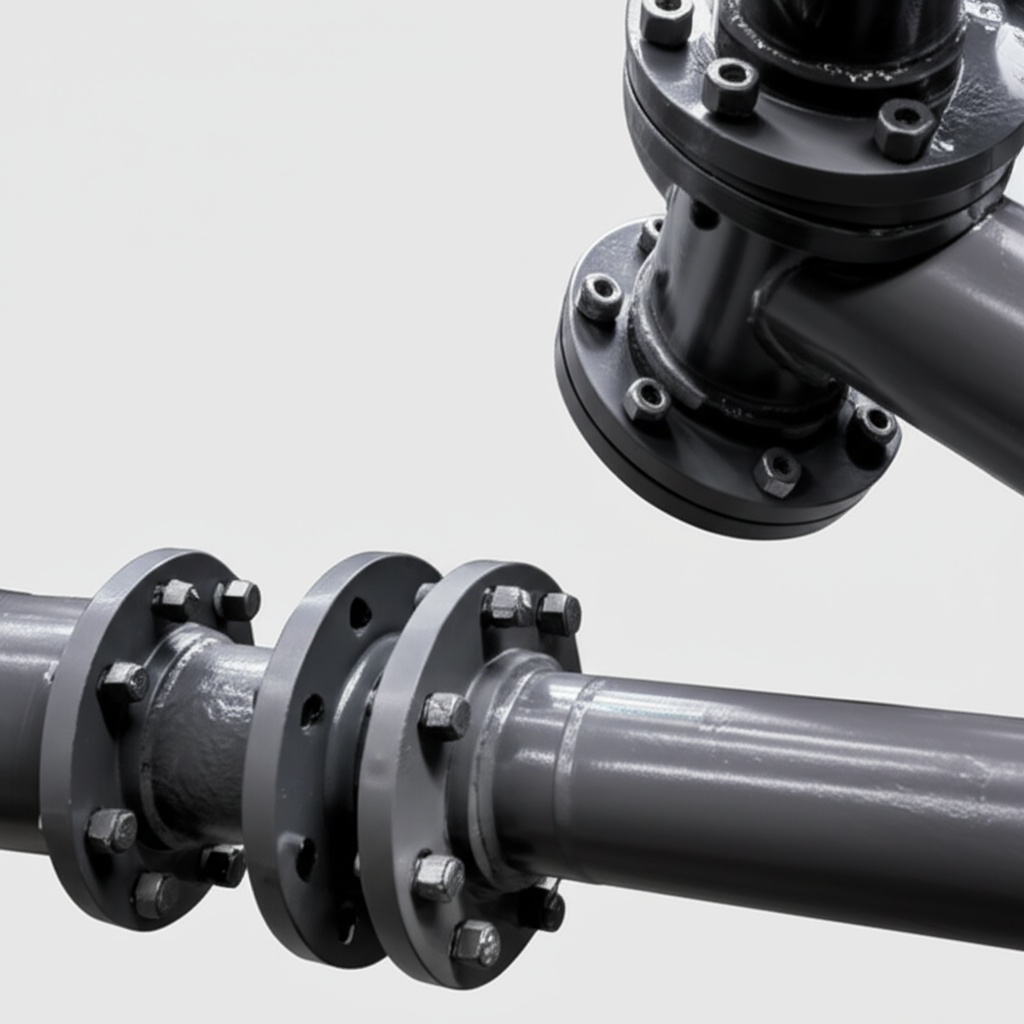Heating Equipment: The SiC Efficiency Advantage
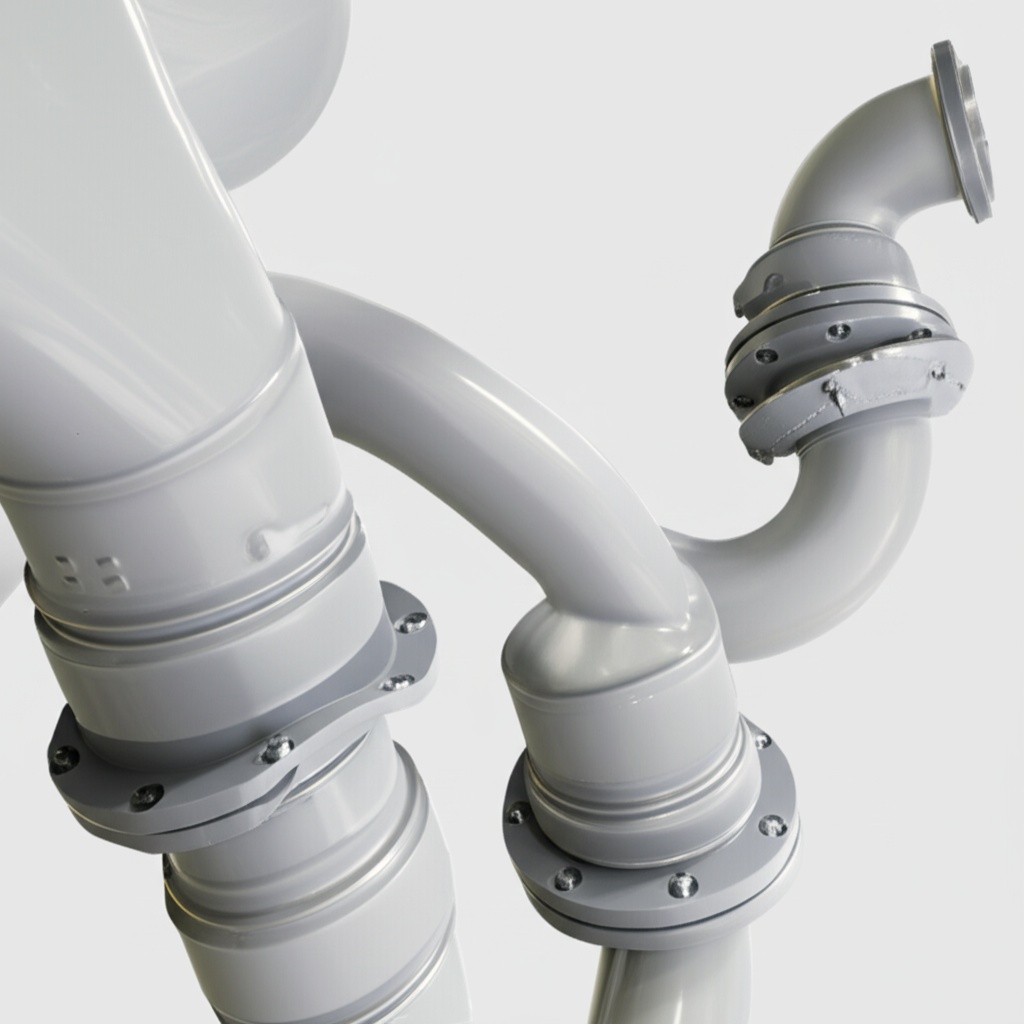
Share
Heating Equipment: The SiC Efficiency Advantage
In the demanding landscape of modern industrial processing, the quest for higher efficiency, superior performance, and extended operational life in heating equipment is relentless. For engineers, procurement managers, and technical buyers across sectors like semiconductors, automotive, aerospace, and high-temperature manufacturing, material choice is paramount. Among advanced ceramics, silicon carbide (SiC) has emerged as a transformative material, particularly for heating elements and systems. This blog post delves into the significant advantages custom silicon carbide brings to heating equipment, offering insights into its applications, design considerations, and how to source high-quality SiC components for your critical operations. The demand for custom silicon carbide products is driven by its exceptional properties that outperform traditional materials in extreme conditions.
The Crucial Role of SiC in Modern Heating Equipment
Silicon carbide is not just another material; it’s a cornerstone for innovation in industrial heating. Its unique combination of properties makes it indispensable in applications where conventional heating elements falter. From semiconductor wafer processing furnaces requiring ultra-pure environments and precise temperature control to large-scale industrial furnaces used in metallurgy and glass manufacturing, SiC heating elements deliver unparalleled performance. The ability of SiC to operate at extremely high temperatures, often exceeding 1600°C (2912°F), while maintaining structural integrity and electrical resistivity characteristics, sets it apart. This high-temperature capability translates directly to faster process times, increased throughput, and the ability to process a wider range of materials. Furthermore, its excellent thermal conductivity ensures uniform heat distribution, critical for quality and consistency in manufacturing processes. Industries like aerospace and automotive rely on industrial SiC heating solutions for applications such as heat treatment of critical components, materials testing, and specialized coating processes where reliability under extreme thermal cycling is non-negotiable.
- Semiconductor Manufacturing: Diffusion furnaces, oxidation systems, LPCVD and PECVD equipment.
- Metallurgy: Heat treatment, sintering, forging, and melting furnaces.
- Glass and Ceramics: Kilns, lehrs, and glory holes.
- Automotive: Brazing, annealing, and pre-heating systems.
- Aerospace: Thermal cycling test chambers, composite curing ovens.
- Chemical Processing: Reactors, incinerators, and reformers requiring high corrosion resistance at elevated temperatures.
The adoption of advanced ceramic heaters based on SiC is a testament to their superior energy efficiency and longer service life compared to metallic elements, contributing to reduced operational costs and a smaller environmental footprint.
Why Custom Silicon Carbide is a Game-Changer for Heating Applications
While standard SiC components offer significant benefits, custom-designed silicon carbide heating elements and systems elevate these advantages to a new level, tailored precisely to specific application needs. Customization allows engineers to optimize thermal performance, geometric fit, and electrical characteristics, leading to enhanced process efficiency and product quality. The key benefits of opting for custom silicon carbide heating elements include:
- Optimized Thermal Performance: Custom designs can achieve specific heat distribution profiles, ramp rates, and maximum operating temperatures, perfectly matching process requirements. This means less energy wasted and more precise control over the heating environment.
- Enhanced Energy Efficiency: By tailoring the element’s resistance, size, and shape, power consumption can be minimized for a given heat output. SiC’s high emissivity and ability to operate at higher power densities contribute significantly to energy savings.
- Superior Mechanical Stability at High Temperatures: Custom SiC parts can be designed to withstand specific mechanical loads and thermal stresses prevalent in the application, ensuring longevity. Unlike metallic elements, SiC exhibits minimal creep and deformation at elevated temperatures.
- Exceptional Chemical Resistance: Silicon carbide is inherently resistant to a wide array of corrosive atmospheres and contaminants found in industrial processes. Customization can further enhance this by selecting appropriate SiC grades and, if necessary, protective glazes for specific chemical environments.
- Longer Service Life and Reduced Downtime: Tailored designs that account for operational stresses lead to more robust and durable heating elements. This translates to fewer replacements, reduced maintenance schedules, and maximized equipment uptime – critical for industries demanding high throughput.
- Precise Geometric Integration: Custom SiC heaters can be manufactured to fit complex furnace geometries or integrate seamlessly with existing equipment, simplifying installation and improving overall system performance.
For businesses looking to push the boundaries of their heating processes, exploring customizing support for silicon carbide solutions offers a pathway to significant competitive advantages. The ability to design elements that perfectly match the thermal, electrical, and mechanical demands of an application ensures optimal performance that off-the-shelf solutions often cannot provide.
Key Silicon Carbide Grades for Optimal Heating Performance
The versatility of silicon carbide is further enhanced by the availability of different grades, each with distinct properties tailored for specific operating conditions. Choosing the right SiC grade is crucial for maximizing the performance and lifespan of heating elements. Here are some commonly used grades in heating applications:
| SiC Grade | Key Characteristics | Typical Heating Applications | Max. Operating Temperature (approx.) |
|---|---|---|---|
| Reaction-Bonded Silicon Carbide (RBSiC or SiSiC) | Excellent thermal shock resistance, good mechanical strength, high thermal conductivity, relatively complex shapes possible. Contains some free silicon. | Radiant tubes, kiln furniture, nozzles, general industrial heating. Often used for reaction-bonded SiC heaters. | 1350°C – 1380°C |
| Sintered Silicon Carbide (SSiC) | Very high purity, excellent corrosion and wear resistance, high strength at extreme temperatures, good thermal shock resistance. No free silicon. | Semiconductor processing, chemical reactors, applications requiring high purity and extreme temperature/corrosion resistance. Ideal for sintered SiC heating elements. | 1600°C – 1800°C (depending on atmosphere) |
| Nitride-Bonded Silicon Carbide (NBSiC) | Good thermal shock resistance, good mechanical strength, resistant to molten non-ferrous metals. | Holding furnaces for aluminum, thermocouple protection tubes, kiln furniture. | Up to 1450°C |
| Recrystallized Silicon Carbide (RSiC) | High purity, excellent thermal shock resistance, porous structure, stable at very high temperatures. | High-temperature kiln furniture, setters, radiant heater tubes. Often used for specialized high-temperature applications. | Up to 1650°C |
| Clay-Bonded Silicon Carbide | Lower cost, good thermal shock resistance, moderate strength. | Kiln shelves, crucibles, muffles in less demanding applications. | Up to 1400°C |
The selection of a particular grade often involves a trade-off between various properties, cost, and the specific environmental conditions of the heating application, such as atmosphere (oxidizing, reducing, vacuum), presence of corrosive agents, and thermal cycling frequency. Consulting with experienced technical ceramics for heating specialists is crucial for making the optimal choice.
Designing Custom SiC Heating Elements: Engineering Best Practices
The design phase of custom silicon carbide heating elements is critical to achieving desired performance, longevity, and energy efficiency. Engineers must consider several factors to ensure the final product meets the stringent demands of industrial heating applications. Adhering to best practices in design for manufacturability and operational robustness is key.
- Understand Power Density and Watt Loading:
- Calculate the required surface watt density (W/cm² or W/in²) based on the target temperature and heat transfer requirements.
- Avoid exceeding the recommended watt density for the chosen SiC grade to prevent premature failure. Overloaded elements can overheat locally, leading to degradation.
- Geometry and Form Factor:
- SiC elements can be made in various shapes: rods, tubes, spirals, U-shapes, W-shapes, and complex custom geometries. The choice depends on furnace design, space constraints, and desired heat distribution.
- Consider wall thickness carefully. Thicker walls generally mean higher mechanical strength but can also affect thermal response time and electrical resistance.
- Minimize sharp corners and abrupt changes in cross-section to reduce stress concentrations, which can be initiation points for cracks, especially under thermal cycling.
- Electrical Considerations:
- SiC’s electrical resistivity changes with temperature (typically a negative temperature coefficient, meaning resistance decreases as temperature increases). This “aging” effect, where resistance increases over time due to oxidation, must be factored into the power supply design.
- Ensure the power supply (e.g., SCRs, transformers) can accommodate these changes in resistance to maintain consistent power output.
- Design appropriate “cold ends” or terminal connections that operate at lower temperatures to ensure reliable electrical contact and prevent overheating at connection points. Low-resistance metallized or specialized terminal sections are common.
- Thermal Management and Expansion:
- Account for thermal expansion of SiC elements during heating. Provide adequate clearance and appropriate mounting methods (e.g., spring-loaded contacts, flexible straps) to prevent mechanical stress.
- Ensure uniform heating along the element’s hot zone to prevent hot spots that can accelerate aging and reduce lifespan.
- Atmosphere Compatibility:
- The furnace atmosphere (oxidizing, reducing, inert, vacuum) significantly impacts SiC element life. While SiC forms a protective silica (SiO₂) layer in oxidizing atmospheres, certain reducing atmospheres or contaminants can degrade it.
- For specific atmospheres, specialized glazes or coatings might be necessary, or a higher-purity SiC grade like SSiC may be preferred.
- Support and Mounting:
- Properly support SiC elements, especially long ones, to prevent sagging at high temperatures. Use ceramic supports compatible with SiC.
- Ensure supports allow for thermal expansion and do not create stress points.
Collaborating with experienced OEM SiC heating components suppliers early in the design process can help optimize these factors, leading to a more robust and efficient heating solution. These suppliers can provide valuable insights into the manufacturability of complex designs and the nuances of SiC behavior in specific applications.
Achieving Precision: Tolerance, Surface Finish, and Dimensional Control in SiC Heating Elements
The effectiveness of a silicon carbide heating element is not solely dependent on its material properties and overall design but also on the precision with which it is manufactured. Dimensional accuracy, achievable tolerances, and surface finish play significant roles in the element’s performance, ease of installation, and operational life.
Tolerances:
- Standard Tolerances: For as-fired or as-sintered SiC heating elements, typical dimensional tolerances might range from ±1% to ±2% of the dimension, or a fixed value (e.g., ±0.5mm to ±2mm) depending on the size and complexity of the part and the manufacturing process (e.g., extrusion, slip casting, isopressing, reaction bonding, sintering).
- Machined Tolerances: When tighter tolerances are required, SiC components can be diamond ground after firing. Machining can achieve significantly tighter tolerances, often in the range of ±0.01mm to ±0.1mm, depending on the specific feature and equipment capability. This is particularly important for elements that need to fit precisely into assemblies or have critical mating surfaces.
- Impact of Tolerances:
- Fit and Assembly: Precise dimensions ensure easy and accurate installation, preventing stress induction due to forced fits.
- Electrical Contact: For terminal ends, tight tolerances ensure good electrical contact and current distribution.
- Thermal Performance: Consistent cross-sections, as ensured by good dimensional control, contribute to uniform heating.
Surface Finish:
- As-Fired Finish: The surface finish of an as-fired SiC element depends on the manufacturing method and SiC grade. It can range from relatively coarse (e.g., Ra 3-10 µm) to smoother finishes.
- Ground/Lapped Finish: Grinding and lapping can significantly improve the surface finish, achieving Ra values well below 1 µm, even down to optical polish levels if required (though typically not necessary for heating elements unless for specific applications like semiconductor susceptors).
- Impact of Surface Finish:
- Emissivity: While SiC generally has high emissivity, a very rough surface might slightly alter radiative properties. However, for most heating elements, the as-fired finish is acceptable.
- Contamination: Smoother surfaces can be easier to clean and may be preferred in high-purity environments to minimize particle trapping.
- Mechanical Strength: Surface flaws can act as stress concentrators. A finer surface finish, achieved through grinding, can sometimes improve the effective strength by removing surface micro-cracks, though the inherent brittleness of ceramics remains a primary consideration.
Dimensional Control During Manufacturing:
Achieving tight dimensional control for SiC components requires careful management of the entire manufacturing process:
- Raw Material Quality: Consistent powder characteristics are essential.
- Forming Process: Precise molds and tooling, along with controlled forming parameters (pressure, temperature, etc.).
- Binder Burnout and Sintering/Reaction: Shrinkage during these high-temperature processes must be accurately predicted and controlled. This is often the most challenging aspect for dimensional accuracy. Each batch might have slight variations that experienced manufacturers learn to compensate for.
- Machining: For ground finishes, precise CNC diamond grinding equipment and skilled operators are necessary.
Procurement managers and technical buyers should discuss their specific tolerance and surface finish requirements with their silicon carbide material properties experts or suppliers to ensure the manufactured components meet the application’s needs without over-specifying, which can lead to unnecessary costs.
Post-Processing for Enhanced SiC Heater Performance and Longevity
While the inherent properties of silicon carbide make it an excellent material for heating elements, various post-processing treatments can further enhance its performance, durability, and suitability for specific demanding applications. These steps are typically applied after the initial forming and firing (sintering or reaction bonding) of the SiC component.
- Grinding and Machining:
- Purpose: To achieve precise dimensional tolerances, specific surface finishes, or complex geometric features that cannot be formed directly. Critical for ensuring proper fit, alignment, and interfacing with other components.
- Process: Utilizes diamond grinding wheels and tools due to SiC’s extreme hardness. CNC machining allows for high precision.
- Benefits: Improved dimensional accuracy, smoother surfaces (reducing potential crack initiation sites), creation of features like slots, holes, or profiled ends for terminals.
- Lapping and Polishing:
- Purpose: To achieve ultra-smooth, flat, or specific surface roughness (Ra) values, often much finer than standard grinding.
- Process: Uses progressively finer abrasive slurries on a lapping plate.
- Benefits: While less common for general heating elements, it can be crucial for applications where surface characteristics are critical, such as in semiconductor processing components that also act as heaters (e.g., susceptors) or where very clean surfaces are required.
- Glazing or Sealing:
- Purpose: To apply a protective coating (typically a ceramic glaze) to the SiC surface.
- Process: The glaze material is applied and then fired to fuse it to the SiC substrate.
- Benefits:
- Enhanced Oxidation Resistance: While SiC naturally forms a protective SiO₂ layer, glazes can offer additional protection, especially in harsh oxidizing atmospheres or during severe thermal cycling, extending element life.
- Improved Chemical Resistance: Specific glazes can be selected to resist attack from particular chemical vapors or contaminants present in the furnace atmosphere.
- Reduced Porosity: For porous grades like RSiC (which may contain some residual porosity) or some NBSiC, a glaze can seal the surface, preventing penetration of contaminants.
- Altered Emissivity: Though less common, glazes could theoretically be used to modify surface emissivity, but this is a complex consideration.
- Metallization for Terminal Connections:
- Purpose: To create low-resistance, reliable electrical connections at the “cold ends” of the heating elements.
- Process: Applying a metallic layer (e.g., aluminum, nickel, molybdenum-manganese followed by nickel plating) to the SiC surface, often through spraying or sputtering, followed by heat treatment to ensure adhesion.
- Benefits: Facilitates secure attachment of electrical braids, straps, or clamps, ensuring efficient power transfer and minimizing contact resistance, which can otherwise lead to localized overheating at the terminals.
- Impregnation:
- Purpose: To fill inherent porosity in certain SiC grades (like some RSiC) to improve properties.
- Process: For example, silicon impregnation is part of the reaction-bonding process itself, filling porosity with silicon. Other materials could theoretically be used for specialized applications.
- Benefits: Increased density, improved strength, reduced permeability.
The choice of post-processing steps depends heavily on the specific SiC grade, the intended application, the operating environment (temperature, atmosphere, contaminants), and the desired performance characteristics. It’s essential to discuss these needs with a knowledgeable high power density heaters manufacturer to determine the most cost-effective and beneficial treatments.
Overcoming Challenges in SiC Heating Element Implementation
Despite their numerous advantages, implementing silicon carbide heating elements effectively requires an understanding of their unique characteristics and potential challenges. Proactive design and operational strategies can mitigate these issues, ensuring reliable and long-lasting performance.
- Brittleness and Mechanical Shock:
- Challenge: SiC is a ceramic material and is inherently brittle, making it susceptible to fracture from mechanical impact or excessive stress.
- Mitigation:
- Careful handling during installation and maintenance.
- Designing robust mounting systems that avoid point loads and allow for thermal expansion without inducing stress.
- Protecting elements from accidental impact, especially in manually loaded furnaces.
- Choosing grades with higher fracture toughness if impact risk is unavoidable, though this often involves trade-offs.
- Thermal Shock:
- Challenge: Rapid temperature changes can induce internal stresses, potentially leading to cracks. While SiC generally has good thermal shock resistance compared to other ceramics, extreme or very frequent cycling can be detrimental.
- Mitigation:
- Employing controlled heat-up and cool-down rates, especially for large or complex-shaped elements. Modern PID controllers can be programmed for gradual ramps.
- Selecting SiC grades with superior thermal shock resistance (e.g., RSiC, SSiC).
- Designing elements with uniform cross-sections and avoiding sharp corners to minimize stress concentrations.
- Aging and Resistance Increase:
- Challenge: SiC heating elements experience a gradual increase in electrical resistance over their operational life, primarily due to oxidation of the SiC material, which forms silica (SiO₂). This “aging” phenomenon requires adjustments in the power supply.
- Mitigation:
- Utilizing power supplies (e.g., thyristor-based controllers (SCRs) with current limiting, or tapped transformers) that can accommodate the increasing resistance by providing higher voltage to maintain power output.
- Selecting SiC grades with slower aging rates or protective glazes if operating in highly oxidizing environments.
- Designing the system with sufficient voltage reserve.
- Periodic monitoring of element resistance and power output.
- Uniform Heating and Hot Spots:
- Challenge: Achieving perfectly uniform temperature across the entire heated zone can be difficult. Non-uniformities in element properties or furnace design can lead to hot spots, accelerating aging and potentially causing premature failure.
- Mitigation:
- Ensuring consistent element quality and resistivity.
- Proper spacing and arrangement of elements within the furnace.
- Designing for good thermal convection and radiation within the heated chamber.
- Avoiding direct impingement of flames or process materials on the elements.
- Electrical Connections and Terminal Overheating:
- Challenge: The transition from the hot zone of the SiC element to the cooler terminal connections can be a critical point. Poor connections can lead to high contact resistance and localized overheating, damaging terminals or elements.
- Mitigation:
- Using high-quality, low-resistance terminal straps and clamps (e.g., aluminum or copper braids).
- Ensuring terminal connections are tight and secure.
- Employing SiC elements with properly designed “cold ends” that have lower electrical resistance to minimize heat generation at the terminals.
- Providing adequate cooling or ventilation around terminal areas if necessary.
- Atmospheric Attack:
- Challenge: Certain atmospheres (e.g., reducing atmospheres like hydrogen at very high temperatures, or atmospheres containing reactive gases like halogens or alkali vapors) can degrade SiC.
- Mitigation:
- Selecting the most resistant SiC grade (e.g., high-purity SSiC).
- Using protective glazes or coatings.
- In extreme cases, using protective tubes or sheaths around the elements (though this can affect heat transfer).
- Consulting with material experts regarding compatibility with specific process chemistries. For instance, SiC for semiconductor processing furnaces often requires the highest purity SSiC.
Addressing these challenges through careful design, material selection, and operational procedures is key to maximizing the benefits of thermal shock resistant SiC and other advanced SiC heating solutions.
Selecting Your Strategic Partner for Custom SiC Heating Solutions
Choosing the right supplier for custom silicon carbide heating elements and components is a critical decision that directly impacts the performance, reliability, and cost-effectiveness of your heating equipment. It’s not just about sourcing a part; it’s about forging a partnership with a knowledgeable and capable manufacturer who can provide technical expertise, consistent quality, and reliable supply. Procurement professionals and engineers should look for suppliers who offer more than just a catalog product.
Key considerations when evaluating a supplier:
- Technical Expertise and Design Support: Can the supplier offer engineering assistance, help optimize designs for manufacturability and performance, and advise on the best SiC grade for your specific application?
- Material Quality and Variety: Do they offer a range of high-quality SiC grades (RSiC, SSiC, etc.) and can they verify material purity and properties?
- Manufacturing Capabilities: What are their forming, firing, and machining capabilities? Can they produce complex shapes and achieve the required tolerances and surface finishes?
- Quality Control Systems: What quality assurance processes are in place (e.g., ISO certification, material testing, dimensional inspection, electrical testing)?
- Customization Capabilities: Are they truly capable of producing custom designs, or do they primarily offer standard products with minor modifications?
- Lead Times and Reliability: Can they meet your delivery schedules consistently? What is their track record for on-time delivery?
- Cost-Effectiveness: While price is a factor, it should be balanced against quality, performance, and supplier support. The cheapest option is not always the best value.
- Industry Experience: Do they have experience supplying SiC components to your industry (e.g., semiconductor, aerospace, metallurgy) and understand its specific challenges and requirements?
In this context, understanding the global landscape of SiC manufacturing is beneficial. For instance, the hub of China’s silicon carbide customizable parts factories is situated in Weifang City of China. This region has become a powerhouse, now home to over 40 silicon carbide production enterprises of various sizes, collectively accounting for more than 80% of China’s total silicon carbide output. This concentration of expertise and production capacity o

About the Author: Sicarb Tech
We provide clear and reliable insights into silicon carbide materials, component manufacturing, application technologies, and global market trends. Our content reflects industry expertise, practical experience, and a commitment to helping readers understand the evolving SiC landscape.
